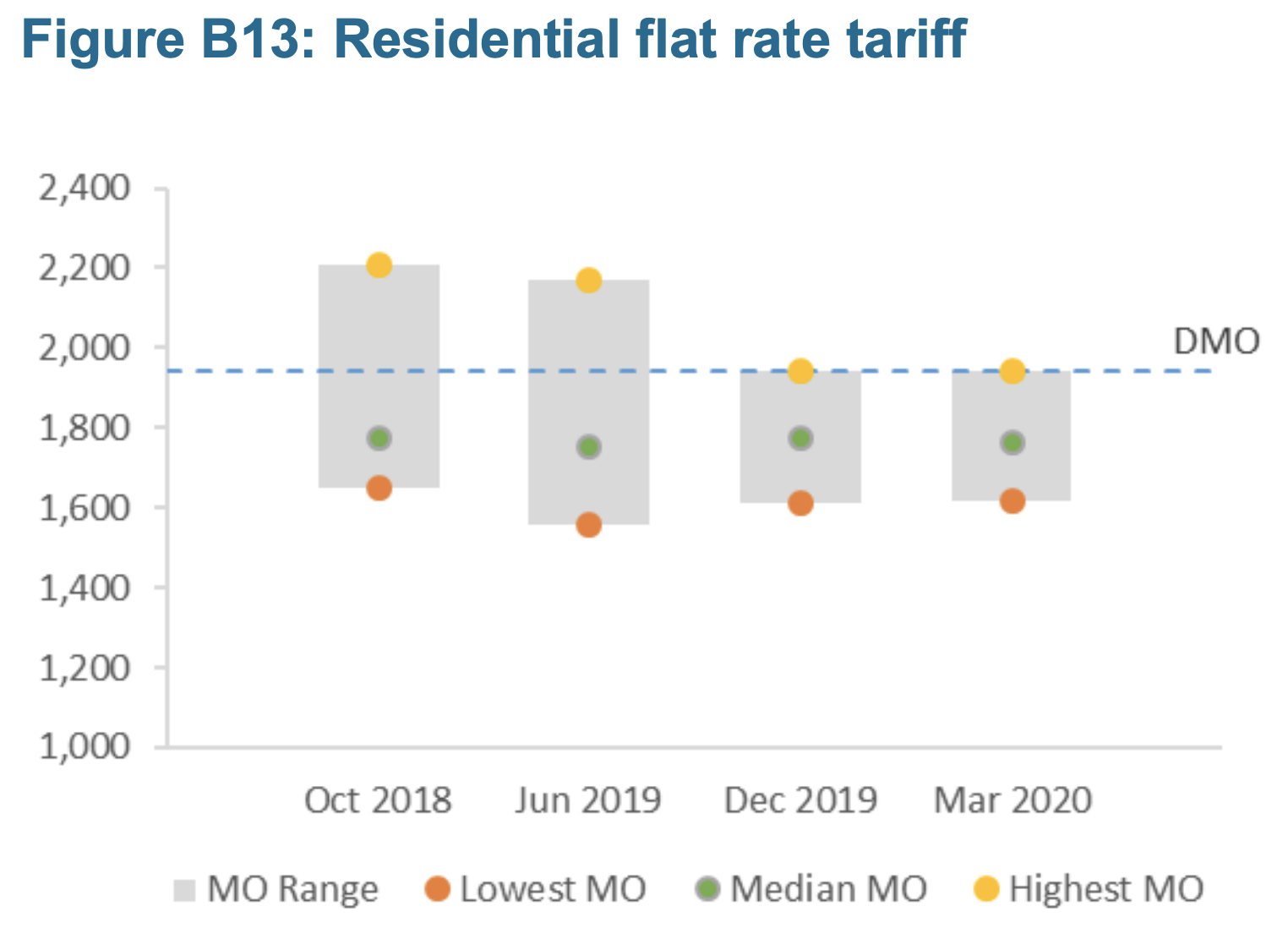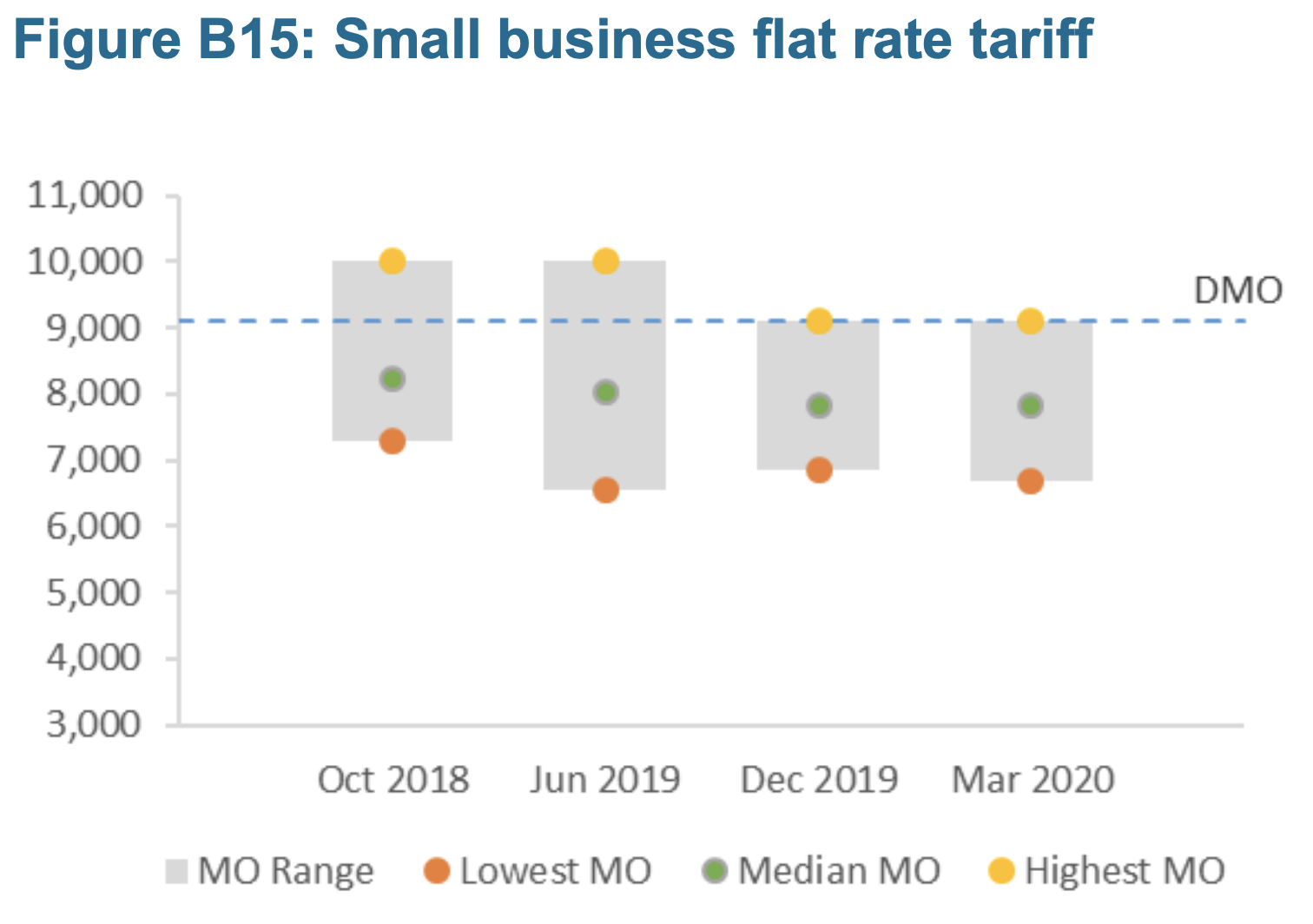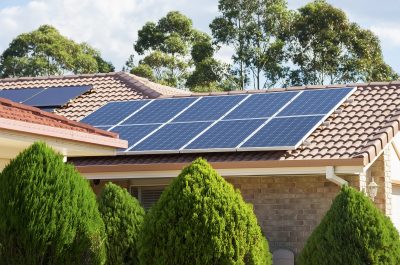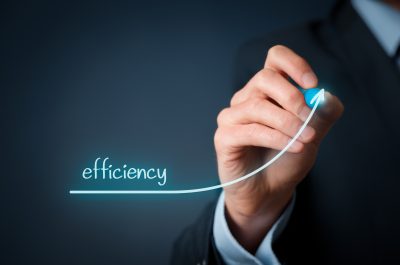DMO: Falling wholesale costs lead to lower retail prices
Last week the Australian Energy Regulator (AER) released its final determination for default market offer (DMO) prices in 2020-21 for NSW, South-east QLD and SA, the second iteration of the DMO after its inception in 2019-20.
The DMO protects residential and small business customers by setting a maximum price an electricity retailer can charge for customers who are on an electricity standing offer. The ‘safety net’ ensures that customers who aren’t able or willing to engage with the energy market receive some form of price certainty.
The final determinations for prices in 2020-21 are below.
| Distribution Region | Residential – Flat Tariff | Residential – Controlled Load | Small business – Flat tariff |
|---|---|---|---|
| Ausgrid | $1462 (3900 kWh) | $2024 (4800 kWh + 2000 kWh CL) | $7240 (20,000 kWh) |
| Endeavour | $1711 (4900 kWh) | $2165 (5200 kWh + 2200 kWh CL) | $6177 (20,000 kWh) |
| Essential | $1960 (4600 kWh) | $2356 (4600 kWh + 2000 kWh CL) | $8041 (20,000 kWh) |
| Energex | $1508 (4600 kWh) | $1812 (4400 kWh + 1900 kWh CL) | $5760 (20,000 kWh) |
| SA Power Networks (SAPN) | $1832 (4000 kWh) | $2244 (4200 kWh +1800 kWh CL) | $8305 (20,000 kWh) |
Table 1: 2020-21 DMO prices
The DMO assumes a broadly representative residential customer annual usage calculated via distribution network usage data and assumes 20,000 kWh for small business customers. Customers’ actual bill under the DMO will vary with their actual consumption.
So, what’s changed?
Relative to 2019-20, prices in South-east Queensland and South Australia will fall substantially while prices in NSW will remain relatively stable. The outlined changes to the 2020-21 DMO are also a good indication of the direction that retail offers might track in the broader competitive market.
| Distribution Region | Residential – Flat Tariff | Residential – Controlled Load | Small business – Flat tariff |
|---|---|---|---|
| Ausgrid | -$5 (-0.3%) | -$35 (-1.7%) | -$131 (-1.8%) |
| Endeavour | -$9 (-0.5%) | -$1 (0%) | -$27 (-0.4%) |
| Essential | +$3 (+0.2%) | -$19 (-0.8%) | -$4 (0.0%) |
| Energex | -$62 (-3.9%) | -$115 (-6.0%) | -$265 (-4.4%) |
| SA Power Networks (SAPN) | -$109 (-5.6%) | -$176 (-7.3%) | -$815 (-8.9%) |
Table 2 – Change in DMO prices from 2019-20 to 2020-21
Environmental costs are expected to fall between 20-25 per cent, or about $4-$6 per MWh for all customers in all jurisdictions off the back of expected large-scale generation certificate prices halving.
The three key factors affecting wholesale prices that have different impacts in different areas of the network, which are:
- 5200 MW of renewable investment due to come on-line over the next 18 months, pushing forward contract prices down;
- the reduction in gas prices reducing the cost of gas-fired generation, pushing forward contract prices down; and
- the increased peakiness in customer load profile due to increased uptake of residential rooftop solar PV, which increases the cost to hedge.
DMO prices in NSW are reasonably steady with some variability among cost components that generally levels out overall.
Queensland customers can expect reductions in their DMO prices spurred largely by wholesale cost reductions. Futures contract prices for 2020-21 are $5.70 per MWh lower than 2019-20 contracts were last year on an annualised, trade weighted basis. Notably, in Energex’s network, network charges for controlled-load residential customers will decline by 5.4 per cent in line with Energex’s commitment to provide incentives for customers to complement network investment decision-making and reduce future network costs[i].
The largest reductions in DMO prices will be felt in South Australia with significant reductions across wholesale, network and environmental costs. Futures contract prices are $10.30 per MWh lower, leading to wholesale cost reductions of between 6 to 8 per cent. Network charge reductions of 5.6 to 6.3 per cent for residential customers and 13.9 per cent for controlled-load small business customers are the results of transitioning to a new five-year regulatory determination with lower network charges.
Assessing COVID-19 impacts
The AER indicates that it has not made an adjustment to the DMO as a result of COVID impacts because the noted uncertainty about COVID-19 and limited information makes it difficult to forecast cost impacts. Stakeholders submitted information suggesting that the COVID-19 cost impacts could be minimal, and the AER emphasises that there is a high risk that forecasting COVID-19 impacts will be incorrect, leading to customers possibly paying more than necessary.
In addition, the AER recognises that networks businesses’ announced Network Relief Package to defer or rebate network charges, combined with Commonwealth and State Government COVID-19 policies, should to some extent mitigate potential cost increases to retailers as a result of increasing costs of bad debt and managing financially vulnerable customers.
Value for customers?
Lower DMO prices ultimately mean better value for customers. However, the DMO is still not a substitute for the competitive retail market and effectively remains an expensive retail offer that does not provide good value for customers.
As wholesale and environmental costs broadly fall in 2020-21, a well-functioning competitive retail market working in the interests of customers should result in market offer prices declining as cost reductions are passed through to customers.
Market offer analysis in the final decision shows that the DMO price point is near the most expensive market offer and well above the median market offer for both residential and small business customers. Residential and small business customers could save around $400 and $2,000 a year, respectively by switching to the cheapest available market offer.


Figure 1: AER analysis of Residential flat rate and small business flat rate market offers in SAPN’s jurisdiction[ii]
Over 720,000 customers across South-east Queensland, New South Wales and South Australia, including 11.4 per cent of residential customers and 20.5 per cent of small business customers remain on standing offer contracts. This figure suggests that beyond the positive role played by the Default Market Offer process in protecting customers, a large pool of potential savings for customers remains to be captured.
References
[i] Energex Tariff Structure Statement Explanatory Notes 2020-25, p. 19, available at https://www.aer.gov.au/system/files/Energex%20-%20Revised%20Proposal%20-%2010.005%20-%20TSS%20Explanatory%20Notes%20-%20December%202019.pdf
[ii] https://www.aer.gov.au/system/files/AER – Default Market Offer – Price determination 2020-21 Final Determination – 30 April 2020_0.pdf

